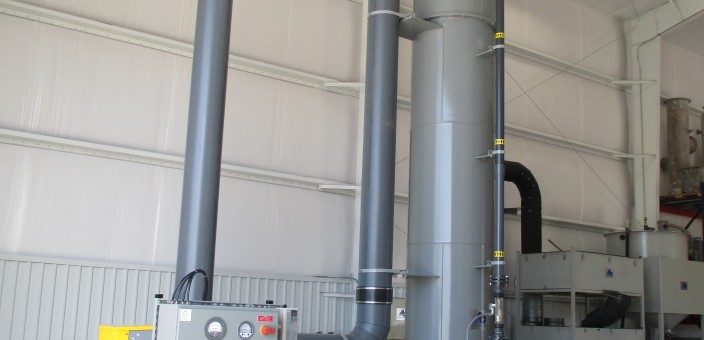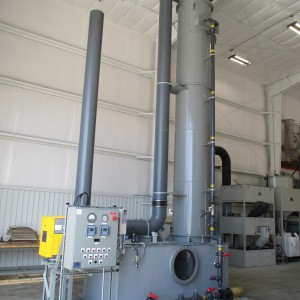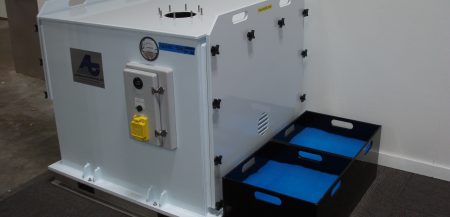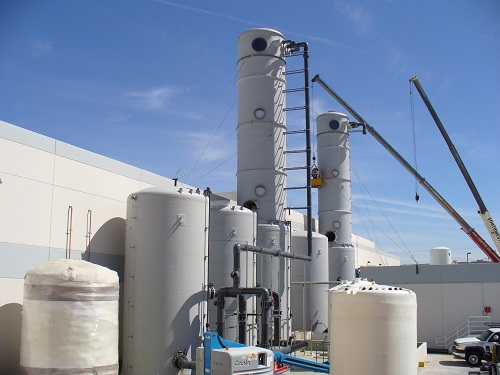PROBLEM
A large Midwestern university research facility uses various Nitric Acid formulations for etching Niobium metal. The etching process produces an extremely smooth micro-surface for maximizing the metal’s superconducting character. The by-product of the etching process is various Nitrogen Oxides (NOx), primarily Nitrogen Dioxide (NO2). These compounds gas out of the etching solution and become entrained and exhausted with air used to ventilate the surface of the etching tank. Of the entire family, NO2 has the worst environmental impact, causing acid rain and having an unsightly orange-brown color. U.S. EPA regulates total NOx emissions to < 20 tons/year in non-attainment zones and indirectly regulates NO2 by limiting stack opacity to <20%. This would typically correspond to 50-200 ppmv, depending on the stack diameter and atmospheric background. AAT, Inc. was contacted to provide a design and quotation to furnish an air scrubber system to remove 95% of the NO2 ventilated from the etch tanks.
Many aspects about this design were challenging, including special chemistry, a batch charge of water with no ability to handle any liquid waste, noise restriction, and inlet air flow automatic modulation. The installation also entailed special challenges, since the entire air scrubber system was shoe-horned against a wall beneath a mezzanine, packed tower scrubber and stack penetrating through the mezzanine. The installation area necessitated that the scrubber water recirculation sump tank be a long narrow rectangular geometry, making for a much more challenging structural design than the typical cylindrical geometry. Lastly, being a municipal project, the bidding was very competitive; so much attention had to be given toward meeting the specification with the most economical design. Any fat or overdesign would likely lose the sale.
SOLUTION
AAT, Inc., was awarded the job and went right to work on 3D modeling the air scrubber system, which was designed to handle up to three etch tanks. The material of construction of the air scrubber tower, ducting and stack was PVC due its economics including ease of welding. The water recirculation sump tank was constructed of PVC as well, but with an outer laminate of FRP for enhanced strength, a construction known as dual-laminate. The air scrubber, exhaust fan and control panel were all factory installed, piped and wired on a steel base, which streamlined the installation, also part of AAT’s project scope. The height and diameter of the packed tower scrubber itself was based on in depth process modeling incorporating chemical reaction kinetics and data from past installations. Variable inlet air flow was desired to conserve energy by speeding up or slowing down the exhaust fan depending on if more or less ventilation air flow was needed (i.e., on how many etch tanks were in use). This was accomplished using a pressure transmitter at the scrubber air inlet in conjunction with a Variable Frequency Drive (VFD) on the fan. The system has been operating satisfactorily since June 2014.







